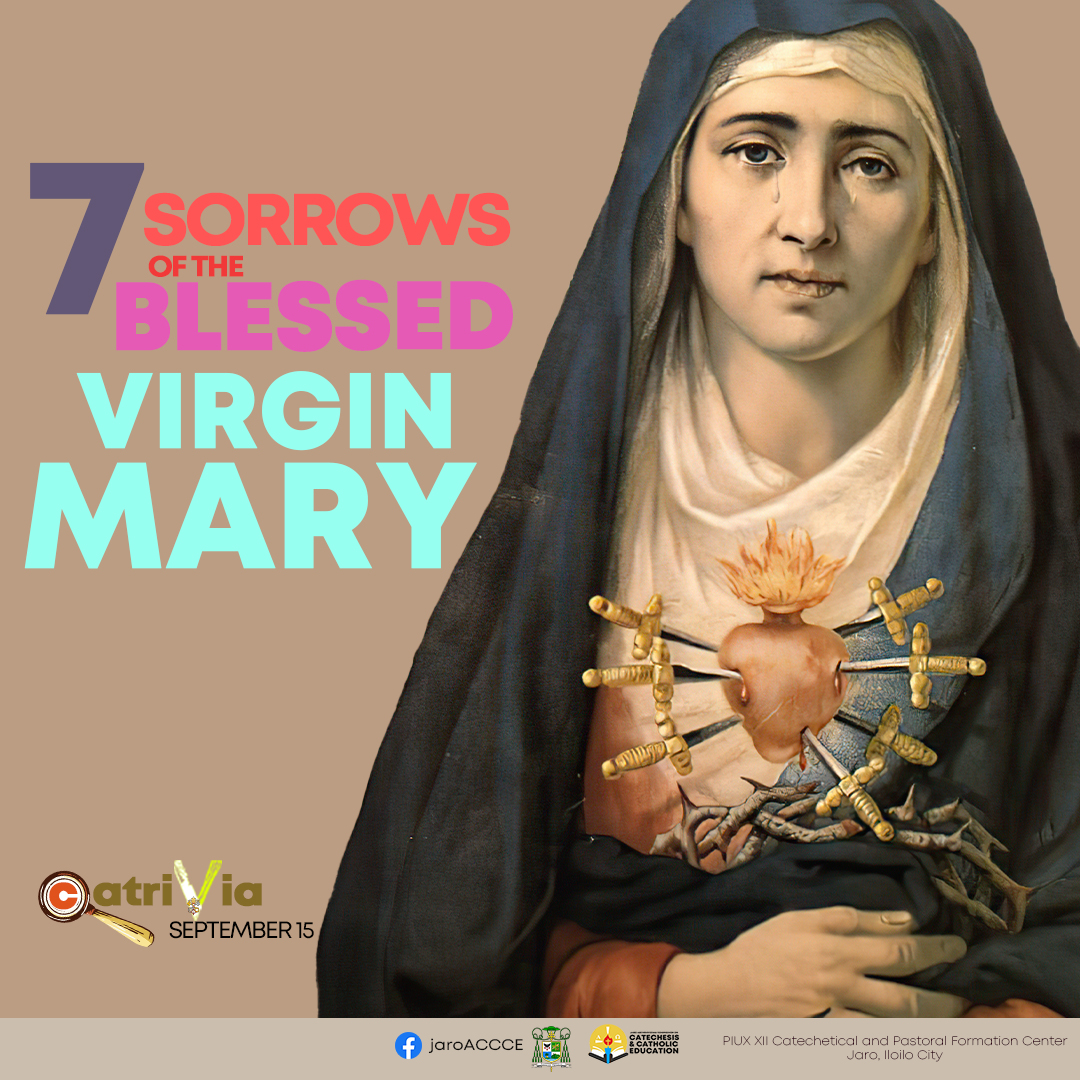General Definition: Catholics have long associated the Latin term dolor, meaning “sorrow” or “pain,” with the sorrows of Mary, the Mother of God. She is often pictured with seven swords, representing seven sorrows, piercing her sinless heart.
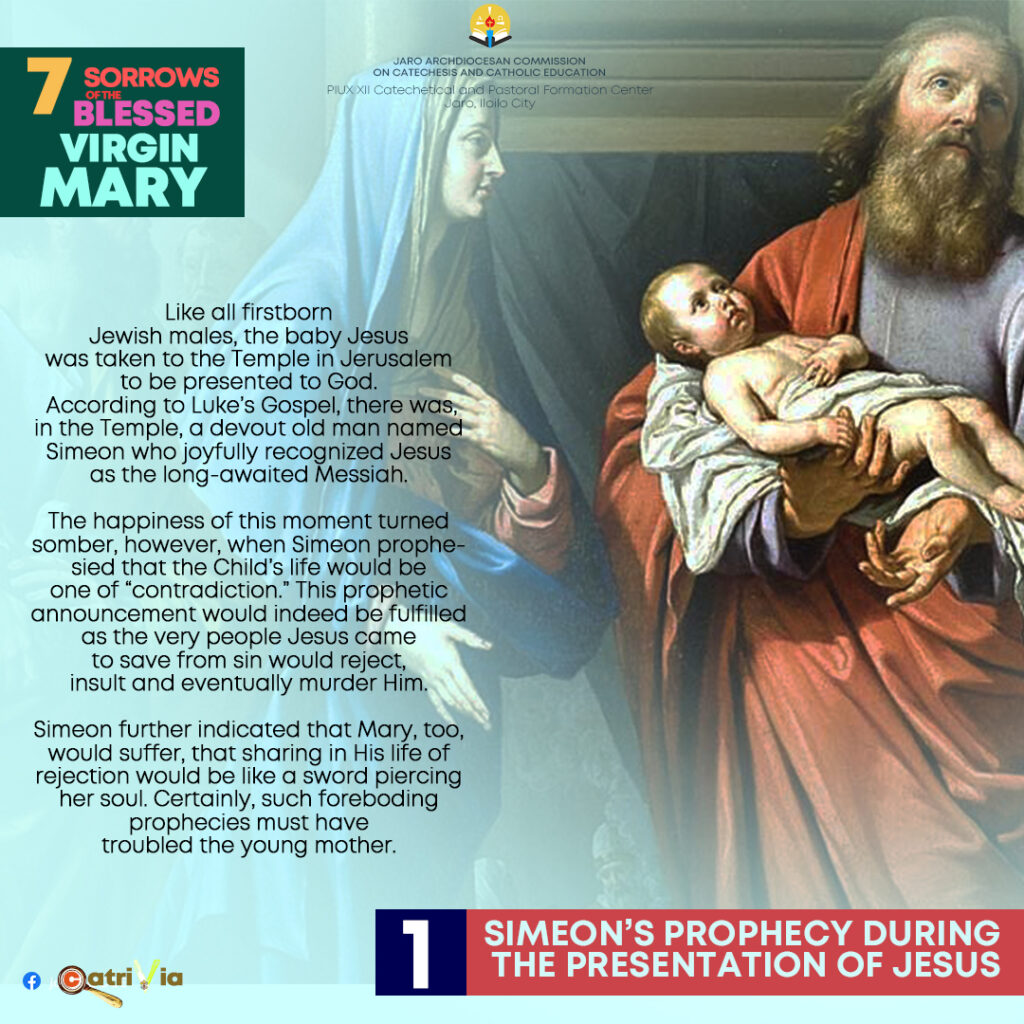
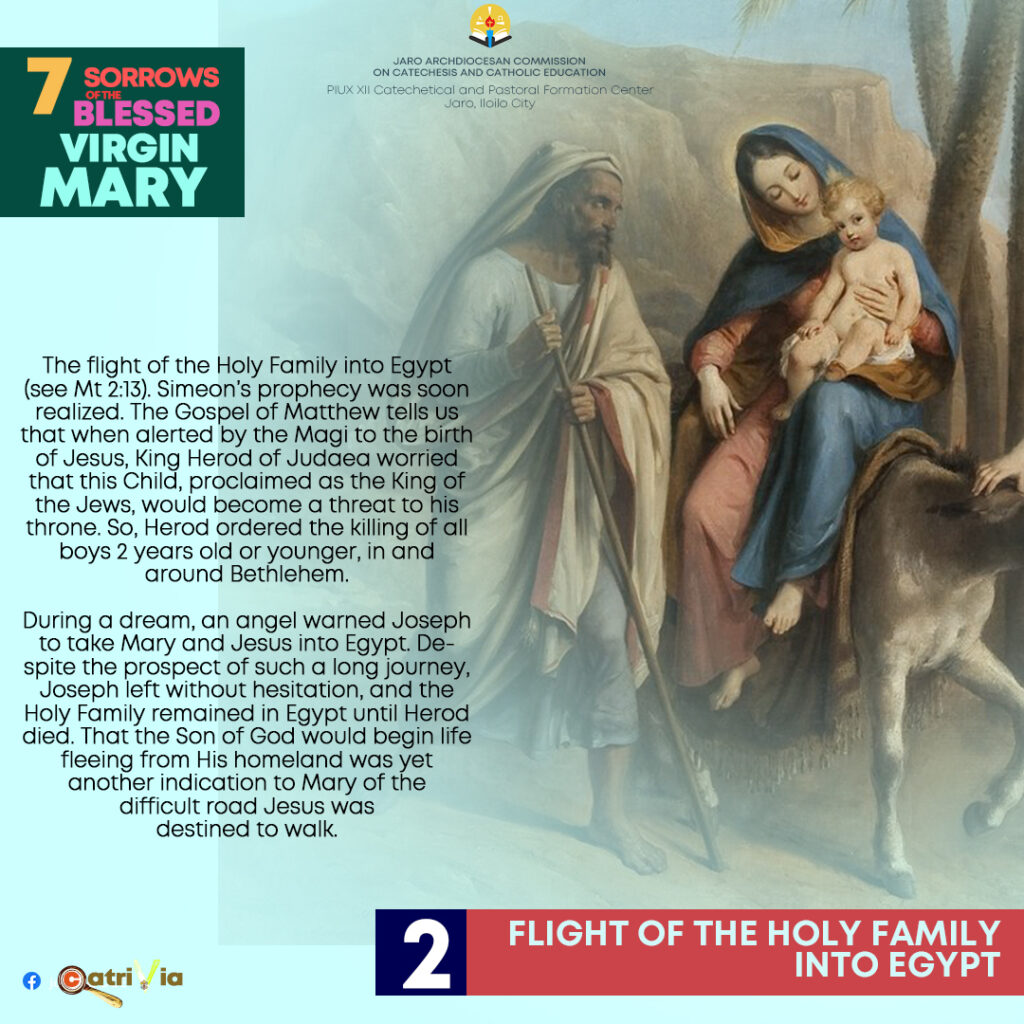
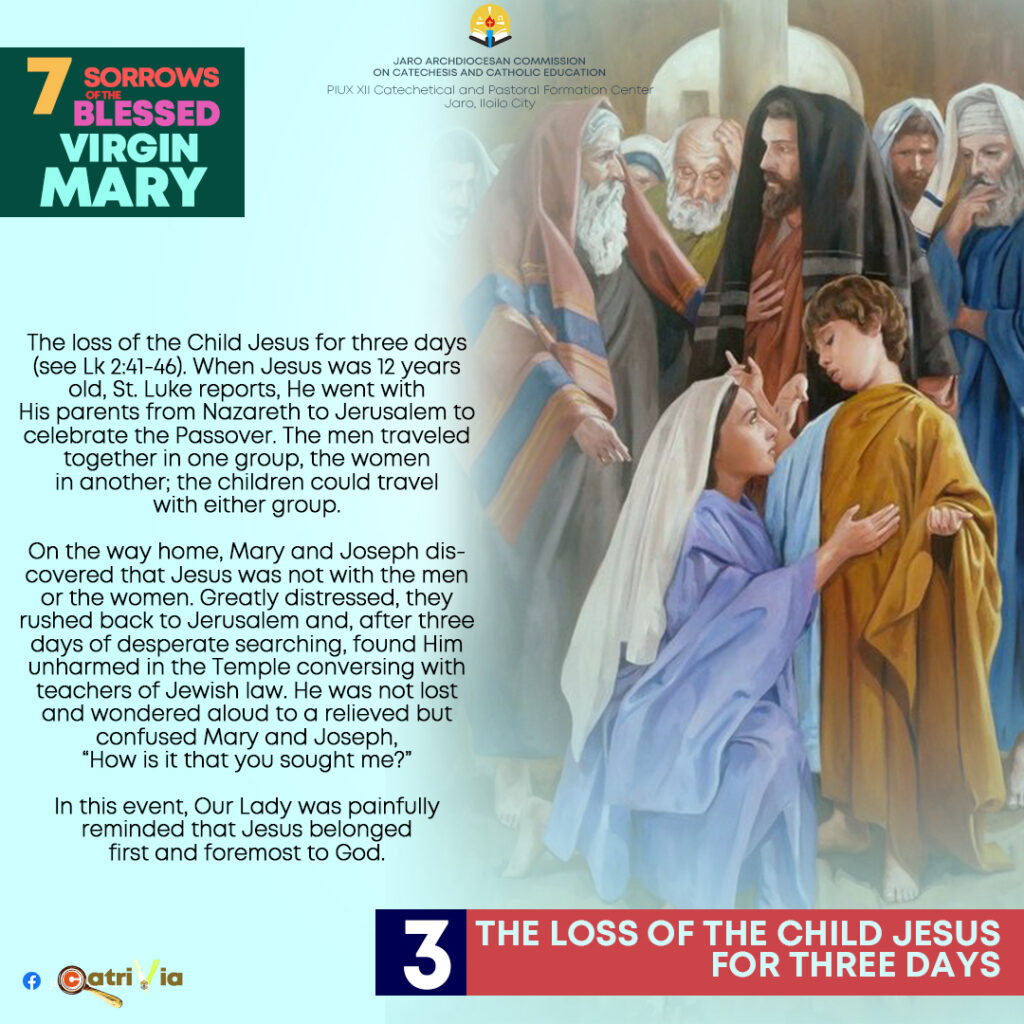
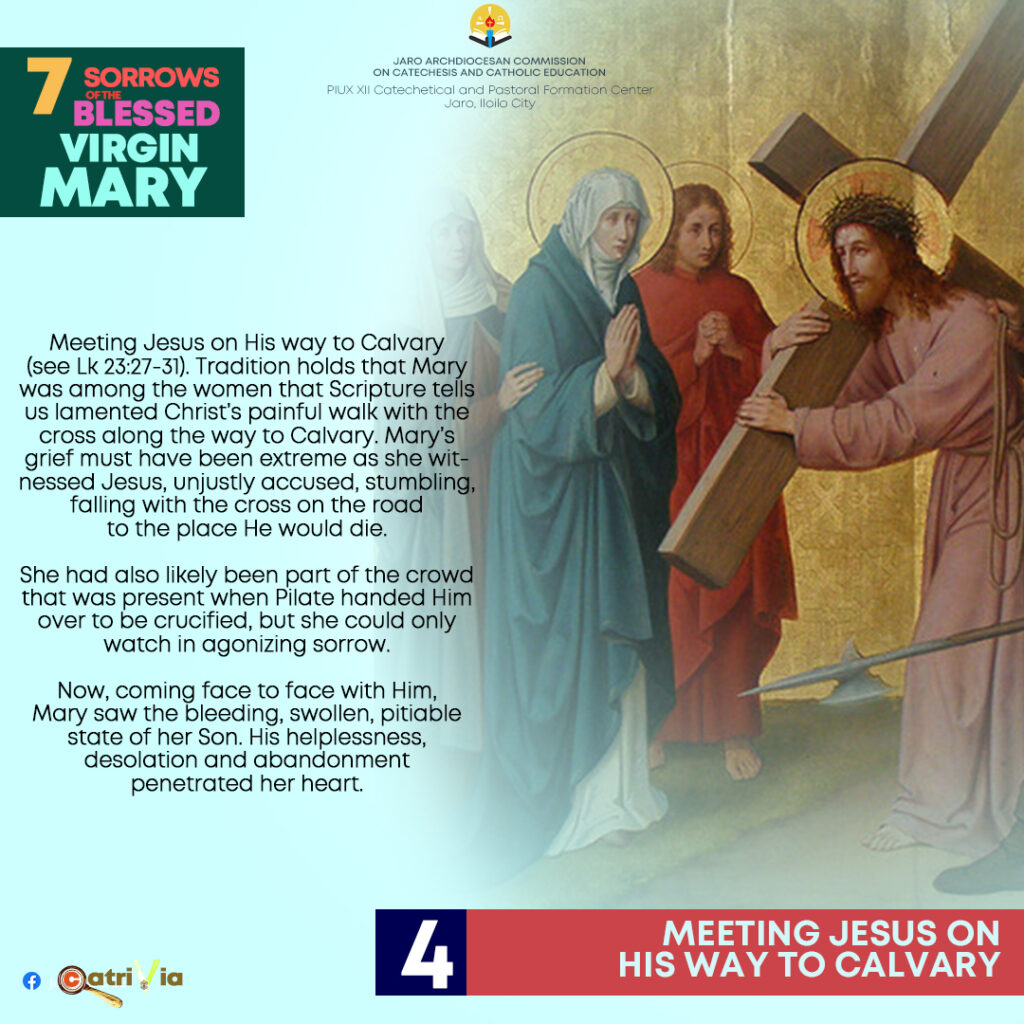
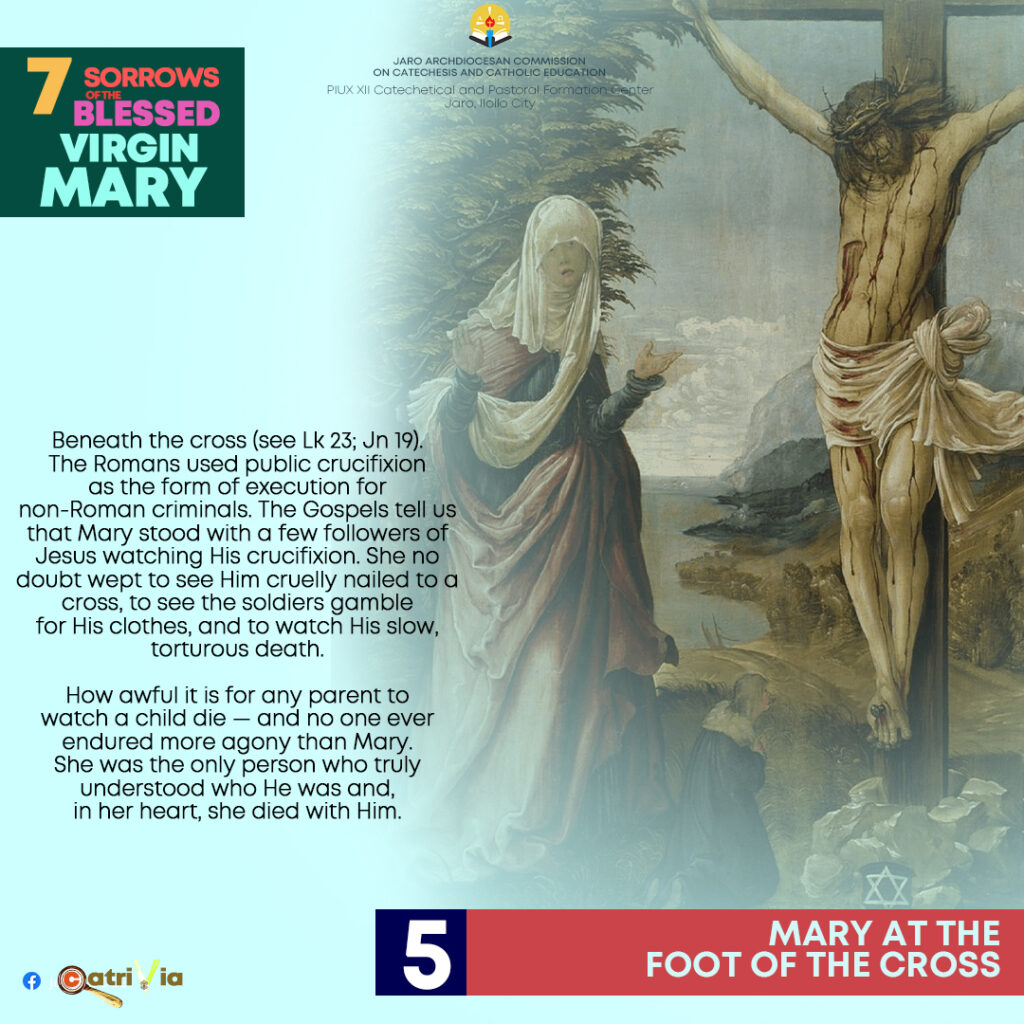
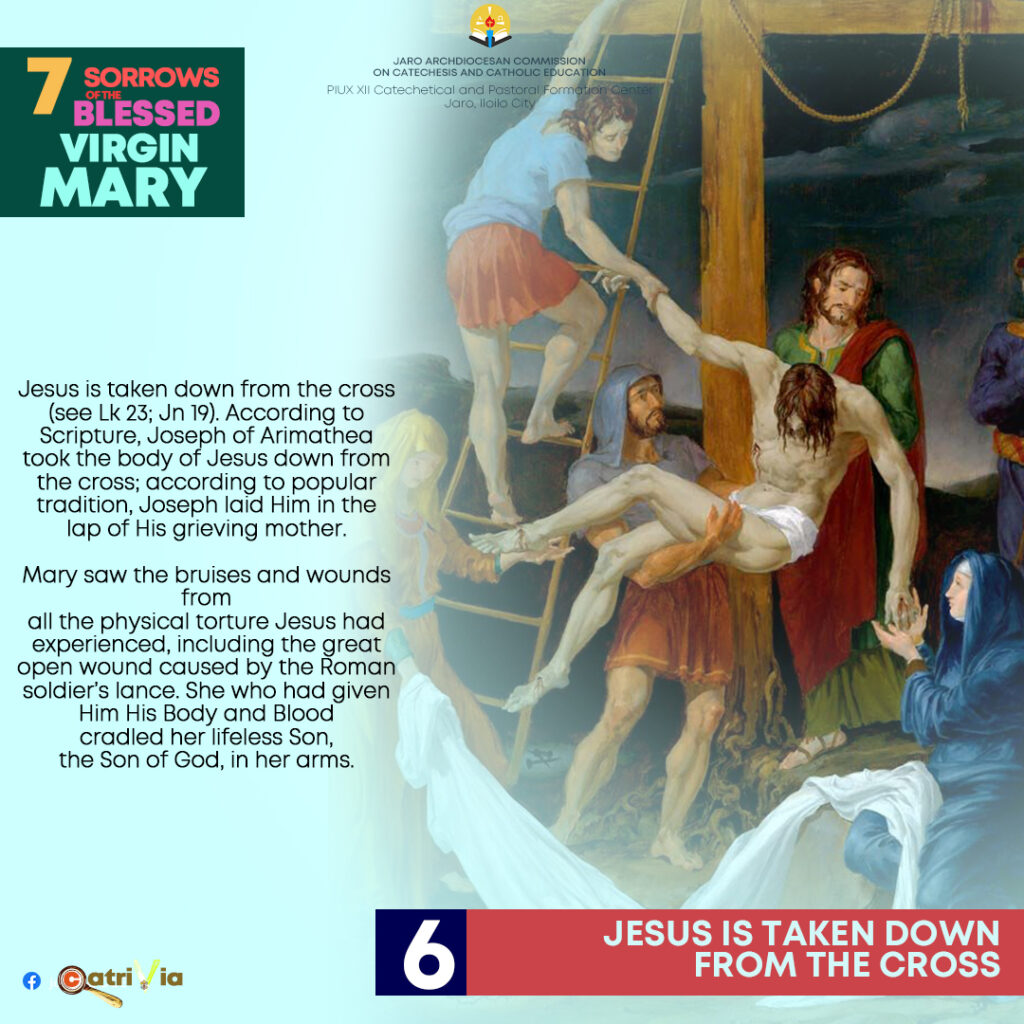
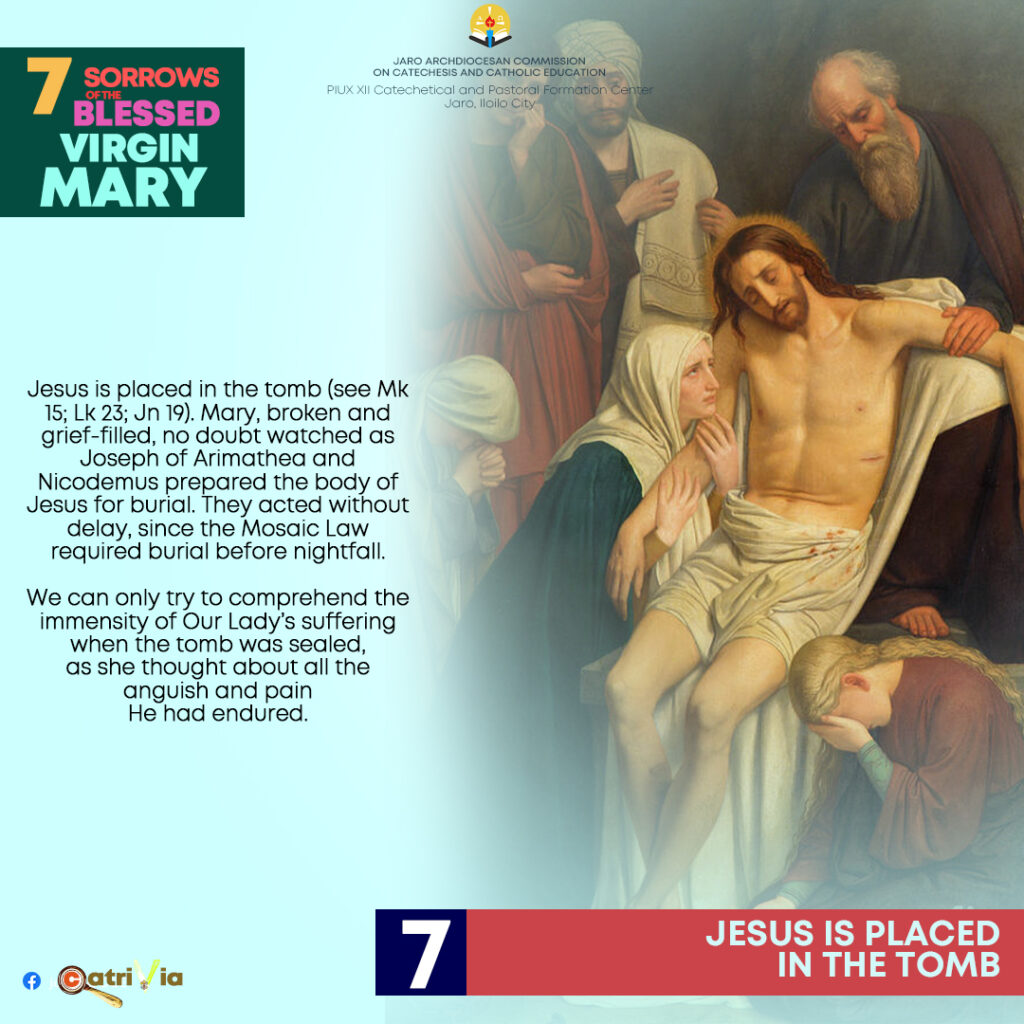
What exactly are these seven sorrows, and what are the origins of this particular Marian devotion?The early Christians, telling of the passion and death of Jesus, remembered the agonizing sorrow the Blessed Mother experienced as she stood at the cross, watching the crucifixion of her divine Son.
Devotion to the Sorrowful Mother gained in popularity during the Middle Ages, and, in some locations, meditation on her was expanded beyond the scene at the cross to encompass other events from the time Jesus was arrested until He was laid in the tomb.Not until 1727, however, was a special day included in the Church’s universal liturgical calendar to recall the sorrow of Mary at the crucifixion and death of Christ. In that year, Pope Benedict XIII added a universal feast, known as the feast of the Sorrows of Mary, to be celebrated the Friday before Passion Sunday. The liturgy that day, the prayers, the readings and the beautiful hymn Stabat Mater (literally, “The Mother Was Standing”) all focus on the Blessed Mother as she stood brokenhearted on the hill of Calvary. This feast day remained on the Church’s calendar until 1969.

